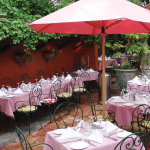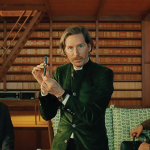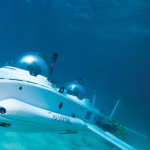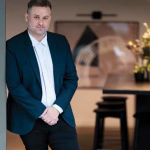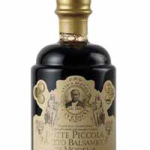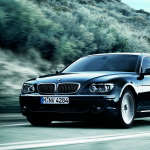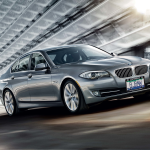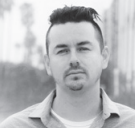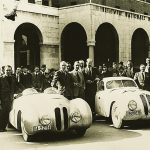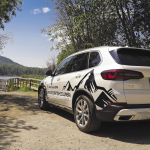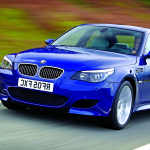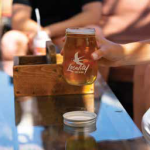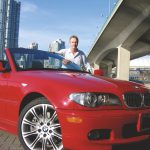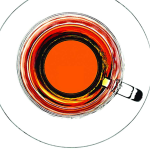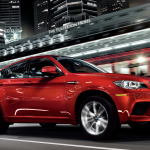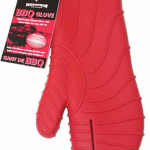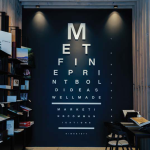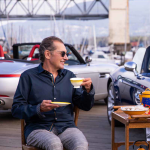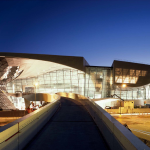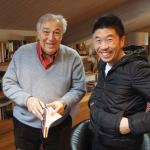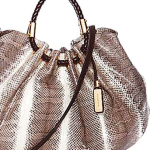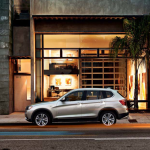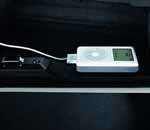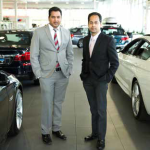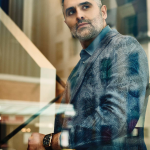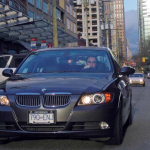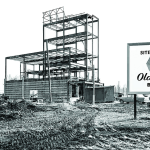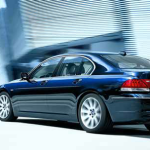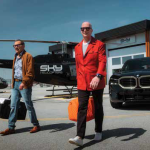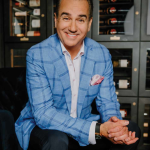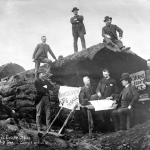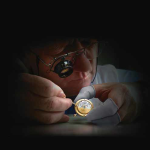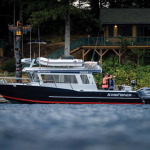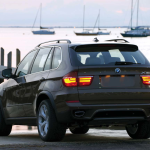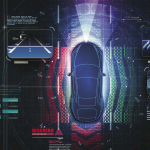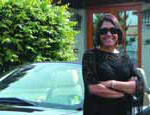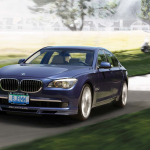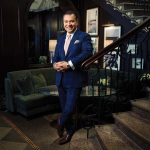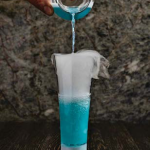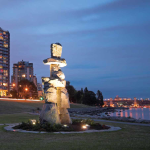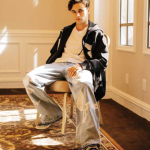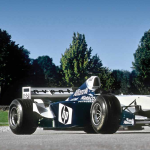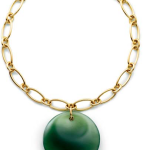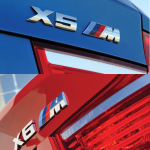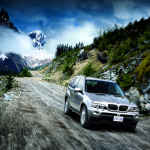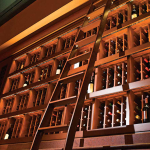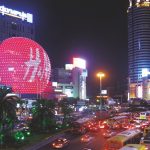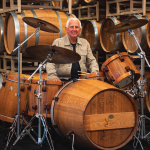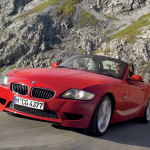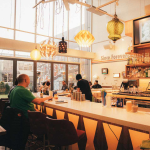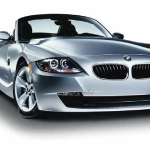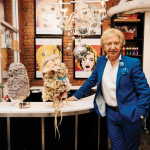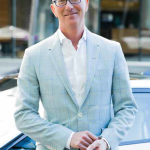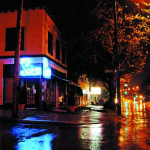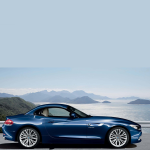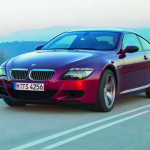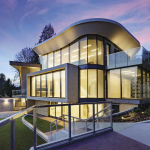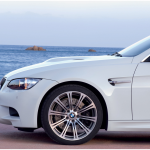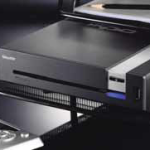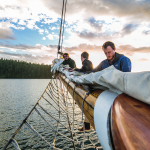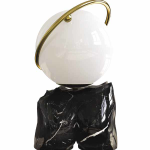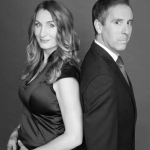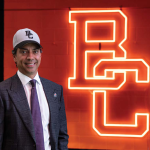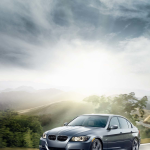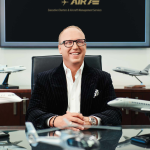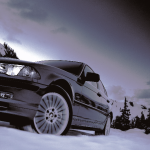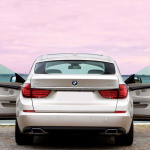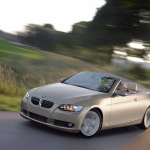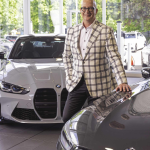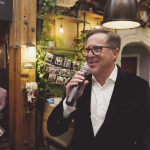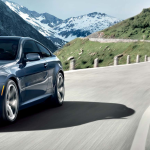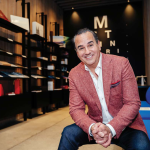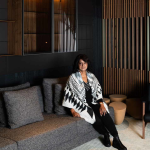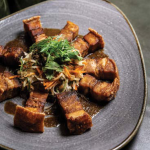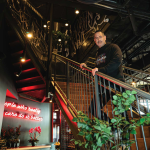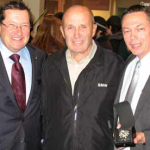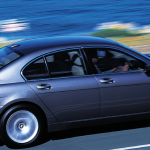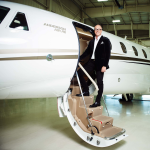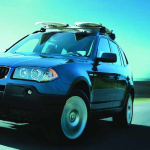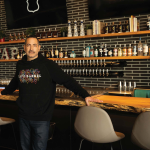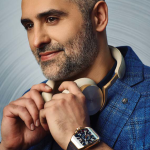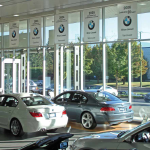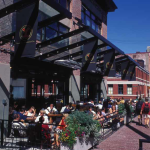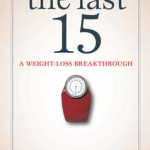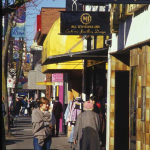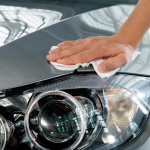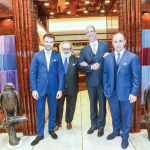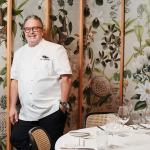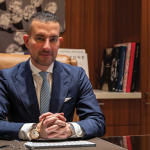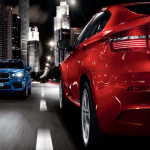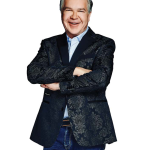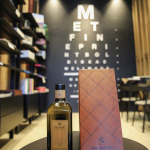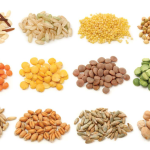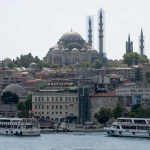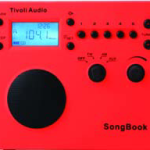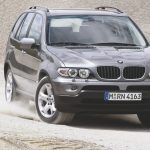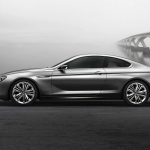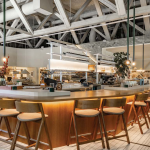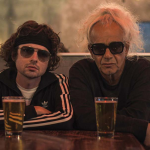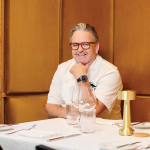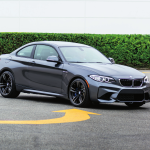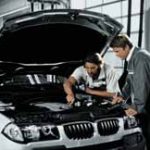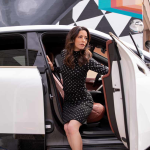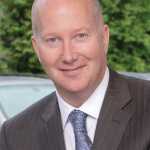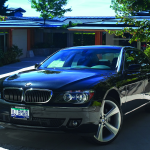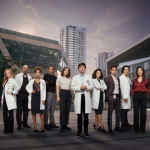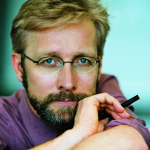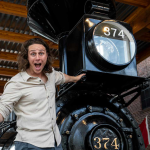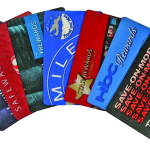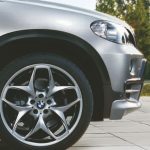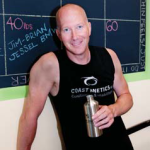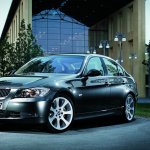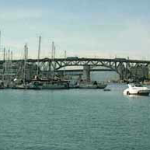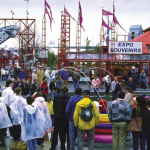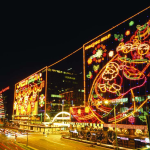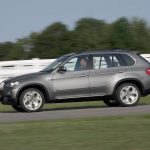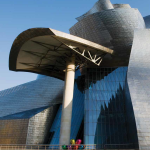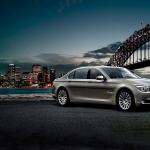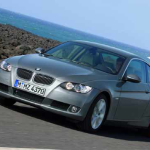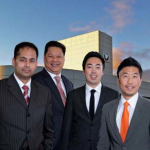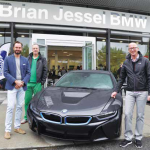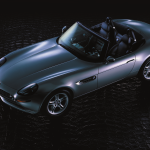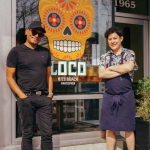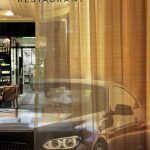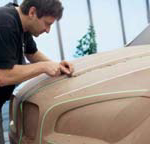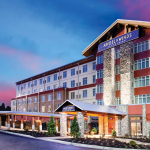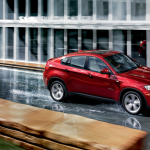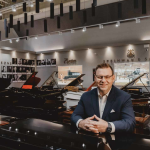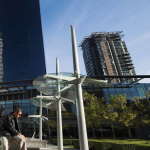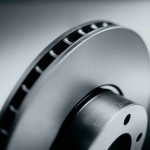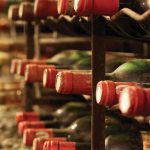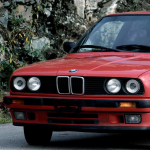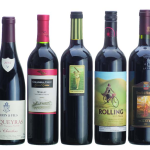
As some of you might know, I am coming up on ten years with Brian Jessel BMW, so I’m obviously committed to our BMW brand; but even I had my eyes opened this past fall as to what BMW culture is really all about. I was fortunate enough to have been invited to Spartanburg, South Carolina, where I toured the BMW plant and got to test drive the upcoming M3 at the BMW Performance Centre.
Then I was off to Munich, Germany, where I visited the BMW headquarters, the BMW Research & Development Centre (known as BMW FIZ, for Forschungs und Innovations Zentrum) and dropped in on BMW’s largest factory in world: the Dingolfing plant, just 100km east of Munich, and the incredible BMW Welt delivery centre. What at trip it was! Let’s start with the factory tour in Spartanburg. It sprawls over 2.4 million sq/ft and produces 600 new BMW vehicles per day on an in line sequence product line.
The plant currently builds all the world’s X5 and Z4s but will soon be producing the new upcoming X6. BMW invested $3.3 billion in this plant, which is the first automotive plant in North America to use methane gas from local landfills to meet its energy needs. This methane, which is piped in from over nine miles away, actually provides the plant with 63% of its energy needs. It also has the first “green” paint shop.
It truly is a world class BMW plant and is very much worth visiting if you ever find yourself in South Carolina. Next, I visited the BMW Performance Centre just around the corner from the plant—this is where the serious fun began! After receiving some instruction from the professional drivers at the Performance Centre we were paired in groups of two and allowed to do a series of track test drives. First up were 335i sedans, one of my favorite powertrains from BMW. They were incredibly responsive on the course; just ask my colleague from BMW Canada, as he hung on to his seat as I raced my first lap.
Sponsored Ads

The Centre also has an off-road track designed show how agile and able the X3 and X5 can be. As I drove on the track there were moments it seemed the X5 should be tipping over, due the incredibly steep angles. Luckily most of our customers will never find themselves in this kind of a position, but it’s nice to know that if they are, the X3 and X5 can do the job! The best, of course, was saved for last.
I was allowed to take the New 2008 M3 Coupe (which won’t be released until spring 2008) for a spin. Believe me, I took full advantage of the 400hp V8 engine. It’s unbelieveable how quickly this car moves, cornering rails and sounding— well, like a V8, This baby roars! This was undoubtedly the most fun I have every had in any car; it truly is the driving car of driving cars. Finally, we took hot laps with a BMW Performance Driver in the M5. Just when you think you know how to drive! These guys really knew how to put the M5 through its paces at full speed, with no DCS—they really showcase just what a 500 hp full-sized sedan can do.
Once I recovered from this amazing experience I was off to Munich Germany, the home of BMW. This was my second trip there and I just love the city. My first day of meetings I went to the BMW FIZ, the BMW’s research & development centre; I was amazed at how big this division of BMW actually is. The sprawling glass centre houses engineers, designers and marketing managers. Every aspect of producing and testing a new BMW begins here. Then, I was off to BMW fantasyland, the new 250 million euro BMW Welt delivery centre.
This is the most unbelievable BMW customer experience anyone could every dream of. First, the sheer architectural experience of the Welt is overwhelming, but that’s just the beginning. BMW Welt encompasses everything from restaurants to interactive technology simulators, as well as a delivery centre for customers who want to take delivery of their new BMW at the vehicle’s birthplace, Munich. My insider’s tour even included a peek at the amazing technology behind the storage of the BMWs for customer delivery. First, the cars are driven into a room with a closed door in front of it; the driver then exists the vehicle and leaves the room.
He or she enters a code into a panel, the door opens automatically, and the car is moved on its platform into a large warehouse several stories high and parked into its spot, like a CD into a rack. Even the oxygen is reduced in the storage space, so as not to pose any fire risk. It was like witnessing something out of science fiction!
Next, I visited Premium Lounge, where customers are welcomed as they check in to take delivery of their vehicles. The Lounge is a modern and stunning space, but if you feel you need privacy you can, (for a modest charge) rest in a private lounge equipped with a large plasma TV and sound system. After checking in and taking some refreshments, customers then visit the Product Information Centre. There they are introduced to all the features of their new vehicle, complete with an image of the exact car they ordered.
The keyless, touch-screen table and overhead image projection make the whole experience seamless and very high-tech. Finally, customers walk downstairs to an open area where the vehicles are waiting for them. There, in full view of the public side of the Welt, the delivery specialist trains a spotlight on the customer’s own vehicle, which is revolving on a pedestal. If you are ever in Munich or would like the experience of a lifetime, I absolutely encourage you to visit BMW Welt. Better yet, arrange through Brian Jessel BMW to take delivery of your new vehicle at BMW Welt, and turn it into a spectacular and unforgettable holiday. My final day in Germany was fantastic.
I left the hotel in Munich and hopped into a 335D sedan with an M sport package and drove approximately 100 km to the BMW Dingolfing plant. The 335D engine is a delight; not only does it have an incredible amount of low end torque, it can easily top the scale at speeds of 250km. This engine will make its debut in Canada next fall in the 335D sedan and X5 Diesel. The European markets have enjoyed the diesel technology for years and now we will, too. The plant tour at BMW Dingolfing is really something to see. It is the largest BMW plant in the world and produces all 5 Series, 6 Series and 7 Series worldwide. BMW invested 46 million euro in it; it has some 23,000 employees, most whom are bussed in daily.
It is hard to describe the enormous size of this factory; it produces a new BMW every 40 seconds, or 1250 per day. It also has a full production plant with the world’s largest transfer press, with up to 9500 tonnes of pressing capacity; it can turn out up to 13 components per minute, moulding steel and aluminum panels up to nine square meters in size. After returning home after my life-changing trips to Spartanburg and Munich, I couldn’t help but have a renewed appreciation for what a premium brand BMW really is, the enormous size of the company, and the work and dedication involved in bringing that beautiful BMW to your drivewaya
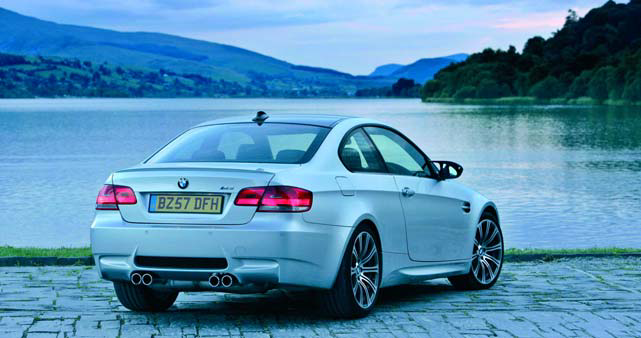
Sponsored Ads

BMW Dingolfing Plant www.bmw-plant-dingolfing.com
1967 BMW AG, Munich, takes over Hans Glas GmbH, a medium-sized carmaker in Dingolfing (the company which built the Goggomobil).
1968 Just one year later, BMW starts to move parts of Production (including chassis and suspension components) to the small town in Lower Bavaria. Production of Glas cars in Dingolfing is phased out step-by-step.
1970 BMW decides to build an all-new production plant in Dingolfing “from a clean sheet of paper”. The ground is broken for Plant 2.4 by Dr. Alfons Goppel, at the time the Minister President of Bavaria.
1973 The first BMW built in Dingolfing comes off the assembly line at the new Plant. It is a new 5 Series.
1974 Production quickly increases to 100 cars a day, the number of associates rocketing up to 6,300.
1975 The BMW Dingolfing Plant completes its 100,000th car.
1976 Daily production increases to 360 units. The first extensions of capacity are required in Assembly and the Bodyshop.
1977 Time for the first expansion of the production range in Dingolfing: Following the 5 Series, Dingolfing, now BMW’s largest production plant, also builds the 6 and 7 Series.
1979 BMW celebrates the first half-million BMW cars built in Dingolfing.
1980 Dingolfing also starts building BMW’s “small” 3 Series.
1981 Start of production of the second-generation BMW 5 Series (with 566,070 units of the former model built at the Dingolfing Plant).
1982 Production in Dingolfing exceeds the magic one-million mark.
1983 Another breakthrough: BMW”s very first diesel, the 524td, comes off the production line in Dingolfing.
1985 Production in Dingolfing increases to 1.5 million units.
1987 The new BMW 7 Series for the first time features a 12-cylinder power unit. Total production in Dingolfing increases to two million units, only five years after the first million.
1988 The third-generation 5 Series replaces the former model. The number of associates increases to approximately 20,000.
1990 Dingolfing builds the 200,000th 7 Series.
1991 Production by BMW Dingolfing increases to a total of 3 million units.
1992 A big anniversary: The region and the Company celebrate 25 years of BMW Dingolfing. Plant 2.1 in Dingolfing where the Engine and Chassis Division builds front and rear axles for all BMW cars worldwide is voted “Factory of the Year” among 400 contestants.
1993 The number of current 5 Series built in Dingolfing increases to one million units.
1994 Introduction of the new BMW 7 Series – the third generation of BMW’s luxury performance model.
1996 BMW Dingolfing builds its fourth-million car.
1998 Supreme prize: The Dingolfing Plant receives the J.D. Power Platinum Plant Award as the best car production plant in the world.
1999 Once again, J. D. Power acknowledges Dingolfing as the best car production plant in Europe for its outstanding supply quality, presenting BMW with the Golden Plant Award.
2000 The next dimension: In February the five-millionth BMW comes off the production line in Dingolfing. The new Initial and FurtherTraining Centre at the Plant starts operation in September.
2001 The fourth-generation BMW 7 Series enters production.
2002 The BMW 5 Series celebrates the 30th anniversary.
2003 The new BMW 5 Series enters production, followed shortly thereafter by the comeback of the BMW 6 Series Coupé. Dingolfing celebrates 30 years of BMW car production as well as the six-millionth BMW built in Dingolfing.
2004 Start of production of the new 5 Series Touring. More than 300,000 vehicles marks the highest annual production output in history.
2005 In May 6.5 million cars were produced in Dingolfing since the start of production in 1973.
2007 Anniversary in January: 40 years of BMW in Lower Bavaria. Until March seven million cars have been produced at BMW Dingolfing Plant


















